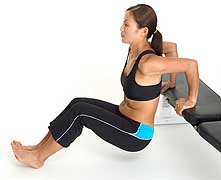I hate fad diets. Matter of fact, I hate all of those fad diet books more than I hate the Yankees (that should score me some brownie points; I’m from Upstate NY). Why do I dislike them so much? They do absolutely NOTHING as far as setting you up for LONG-TERM success. They’re a crutch more than anything; a quick fix. Lets take The Atkins Diet for example. The Atkins Diet essentially has you remove all carbohydrates from your diet, which for most Americans equates to roughly 60% of total calories. It’s obvious that when “we” reduce our total caloric intake by 60% that we’re going to lose weight. However, what many people fail to realize is that most of the weight that is lost is just water and stored glycogen (stored glucose/sugar); and muscle. It’s not unheard of for people to lose upwards of 8-10 lbs in one week on The Atkins Diet (again a vast majority of that weight is water and glycogen). On a side note: in the long run, many of these fad diets sacrifce lean body mass (muscle) which is the last thing you want to do. Muscle is metabolically active tissue (the more you have, the higher your metabolism). Essentially you make yourself a smaller and weaker version of your original self on most of these diets. Not good. But I digress.
Unfortunately all good things come to an end, and before long, progress stalls. People will lose their 20-30 lbs and then revert back to old eating habits and put the weight back on, and then some. The viscious cycle continues.
Honestly, I could go on and on about why I disagree with pretty much every fad diet out there (even you Dr. Phil), but that is beyond the scope of this blog. In the end people need to realize that all of these diets tend to have commonalities (eat more smaller meals throughout the day, focus on lean protein, eat more fruits and vegetables, etc). And speaking of fruits and vegetables (which are carbohydrates), why ANY diet (specifically Atkins) would advocate that people remove them from their diets because they are in fact carbohydrates, is absurd. Trust me it’s not the apples and carrots that are making you fat people; it’s the daily trips to the local pizza joint and bagels every morning.
Anyways, we need to focus on the commonalities. We need to develop SOUND DAILY HABITS in order to succeed in the long run. It’s not about following this diet or that diet. It’s about developing habits and strategies that you are CONSISTENT with. Then and only then will you succeed and lose that stubborn body fat and keep it off forever.
My good friend (and renowned Nutritionist) Mike Roussell developed one such system that I think will blow any fad diet out of the water. Your Naked Nutrition Guide is a system that I advocate for the bulk of my own clients. What I like about it is that it’s simple and practical and it works! No other book out there will help you set up your own individualized nutritional program. You want permanent results now? Quit following the sheep. You don’t need some looney fad diet which promises 15 lbs lost in two weeks. What you need is to learn the basics. It’s as simple as that.





